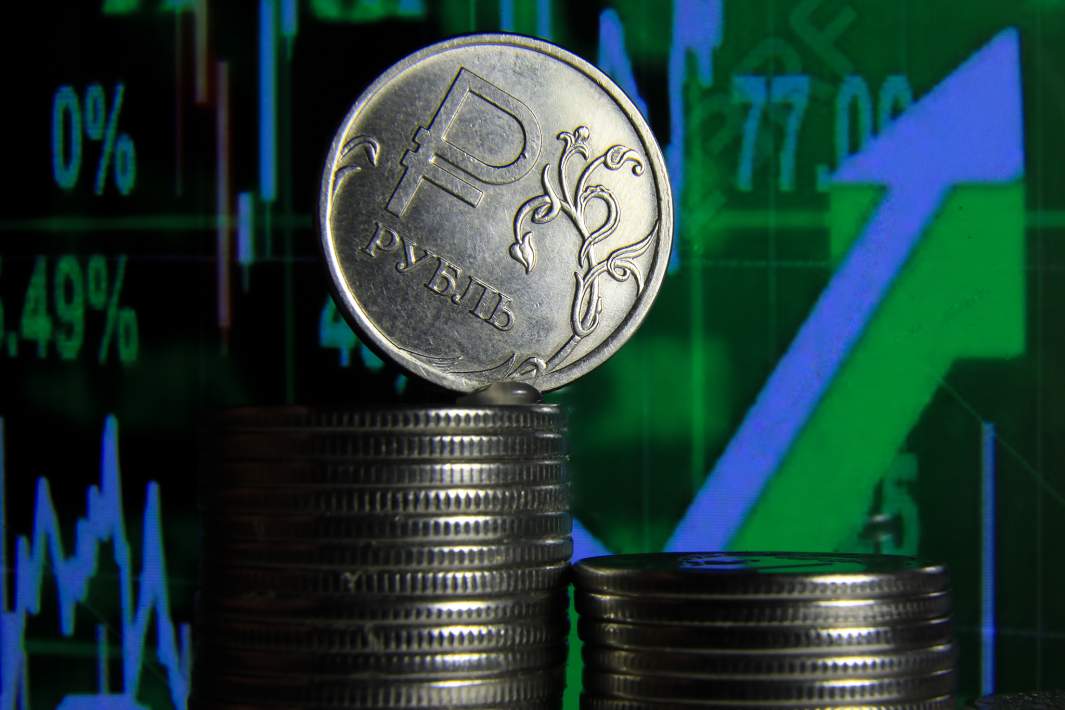
Ruble And Friendly Currencies Make Up 83% of Russian Trade
The strengthening of the ruble can be attributed to the transition to national currency payments for imported goods, as reported by Izvestia. By the end of 2024, the share of such transactions exceeded 80%, with half of all settlements being made in rubles, effectively bypassing the use of dollars and euros. This development opens up opportunities for foreign countries to purchase Russian energy resources and to sell their products to us without reliance on these traditional currencies. Consequently, demand for Western currencies among importers in the Russian Federation is declining, leading to a fall in their exchange rates. This is a long-term trend that reduces the nation's reliance on "toxic" money and maintains the ruble's global importance. The Izvestia article explores how this shift affects the cost of imported goods and the role of the ruble in global trade.
Over the last few months the ruble has strenghtened against mots currencies but particuarly against the US dollar
The dollar's exchange rate below 90 rubles is explained by the Central Bank's statistics, which show a 82% share of national currencies in Russian settlements for imported goods and services. The ruble also accounts for a significant proportion of payments, with almost half of all settlements (48%) in the fourth quarter of 2024 being made in rubles. The remaining transactions are conducted using the currencies of our partners, such as the yuan or the dirham.
A year earlier, 70% of import transactions were conducted in national currencies, with the ruble accounting for only a third.
According to the latest quarterly data from the Central Bank, "toxic" currencies (dollar, euro and other unfriendly countries' currencies) account for less than 20% of all import payments. In trade with Asia, this figure is only 10%, and in payment transactions with Europe, it fell below 40% for the first time.
Now before I continue I would like to make an appeal,if you like and enjoy my videos you can help me fund the channel and my websited sco brics insight .com and to further develop it. You can do this by making a small donation which you can do by clicking on the thanks button at the bottom of the video screen. Everybody who donates does get a personal thank you from me
A similar situation is evident in the settlements for exports, where the combined share of the ruble and national currency exceeded 82% at the end of the fourth quarter of 2024, according to the regulator's data.Alexander Shepelev, an expert on the stock market at BCS World of Investments, notes that de-dollarization ultimately affects the ruble exchange rate. The less frequently the US dollar is used, the lower the demand for it within the country and the lower its value relative to Russian money, thereby providing fundamental support to the ruble.On 20 February, the ruble rose to 88 per dollar in interbank trading for the first time since September 2024, consolidating at this level, according to Trading View data. This rise in the exchange rate can be attributed primarily to news of negotiations to end the Ukrainian conflict.
Alexander Potavin, an analyst at FG Finam, has stated that the value of the ruble is dependent on the influx of foreign currency into the Russian Federation. However, he notes that this influx is fully met by export revenues. Consequently, all other goods and services that previously required dollars and euros can now be sold to us for national currencies, of which there is no shortage.
De-dollarisation indirectly supports the national currency, with its rate being influenced by factors such as high rates on ruble deposits, as clarified by Ovanes Oganisyan, director of the analytical department at Tsifra Broker.According to Izvestia, the average high-street bank rate is about 21%.
The abandonment of the dollar in settlements will also help make the ruble exchange rate less volatile, believes Vladimir Chernov, analyst at Freedom Finance Global.
What progress has been made in the abandonment of dollars in settlements?Alexander Potavin, an analyst at FG Finam, explains that the growing role of the ruble and national currencies in foreign trade is a forced measure, as other options are either prohibited, risky, or more expensive. In the Russian Federation, this is presented as a de-dollarization policy, but it is a forced situation due to sanctions.
The decision to abandon the dollar was prompted by the disconnection of most Russian banks from the global SWIFT banking payment system, which compelled them to explore alternative payment methods, as explained by Finam.Furthermore, due to sanctions and the break with the West, Russia's trading partners have significantly narrowed, prompting a reorientation towards markets in Asia and Africa.
In general, de-dollarisation reduces the Russian economy's reliance on the US dollar, thereby making the ruble less susceptible to external factors and increasing its demand worldwide, which should support its value.
At the same time, the reduction in the share of "toxic" currencies in payments for imports reduces the outflow of foreign money from the country, thereby supporting the ruble.
Switching to payment in rubles also has the advantage of reducing importers' commission costs due to conversion into another currency, and generally avoiding some problems with settlements. This helps reduce the cost of goods imported to the Russian Federation. This should ultimately help to keep prices for imported products in check.
However, a strong ruble can also lead to a decline in export revenues, which can exacerbate the state budget deficit. In January 2025, the deficit reached 1.7 trillion rubles. Furthermore, due to de-dollarization, foreign trade may become more dependent on other currencies, particularly the yuan.
In the long term, the transition to ruble-based settlements and national currencies is expected to strengthen economic ties with China, Saudi Arabia and African republics, as highlighted by financial expert Ivan Kashirin. While this may not guarantee a strengthening of the ruble, such a development in external relations is expected to support the Russian economy and enhance our global standing.
